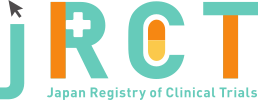臨床研究等提出・公開システム
|
Aug. 17, 2021 |
|
|
June. 14, 2023 |
|
|
jRCTs032210248 |
Titration of Volatile Anesthetic with Brain Function Monitoring for Prevention of Pediatric Anesthesia Emergence Delirium: A Randomized Controlled Trial |
|
Titration of Volatile Anesthetic with Brain Function Monitoring for Prevention of Pediatric Anesthesia Emergence Delirium: A Randomized Controlled Trial |
|
Mar. 18, 2023 |
|
177 |
|
Scheduled surgical procedure under general anesthesia for more than 30 minutes Age 1 to 6 Procedure with minimal or easily controlled postoperative pain |
|
218 potentially eligible patients were approached by the study team 18 declined to participate 200 underwent randomization 22 were excluded acter randomization (1 withdrew consent, 1 met exclusion criteria, 4 postponed or cancelled their surgery, 16 because the study team was not available) 91 received EEG-guided sevoflurane anesthesia From the EEG group, 91 were included in analysis of the primary outcome (PAED Score) 87 received standard sevoflurane anesthesia From the Control group, 1 was excluded after assignment due to an adverse event (laryngospasm) From the Control group,86 were included in analysis of the primary outcome (PAED Score) |
|
One case of laryngospasm in Control group resulting in extension of inpatient stay |
|
PAED score >= 10 Control:30/86 35% vs EEG:19/91 21%, p=0.037. Maximum PAED score Control:4.9(+/-)5.9 vs EEG:6.3(+/-)5.8, p=0.124. Maximum SEV% Control:5.0(+/-)0.0% vs EEG:2.0(+/-)0.2%, p<0.001. Maintenance SEV% Control:2.5(+/-)0.0% vs EEG:0.9(+/-)0.2%, p<0.001. SEV exposure Control:2.1(+/-)1.1 vs EEG:0.8(+/-)0.5 MAC-hours, p<0.001. Emergence Control:40.3(+/-)21.4min vs EEG:19.0(+/-)15.7min, p<0.001. PACU stay Control:34.3(+/-)19.8min vs EEG:17.8(+/-)15.3min, p<0.001. |
|
EEG-guided titration of anesthesia greatly reduced exposure to sevoflurane, leading to a reduced incidence of PAED, shorter recovery times and reduced length of stay in the PACU. |
|
June. 08, 2023 |
|
Yes |
|
Deidentified patient data will be included in submissions to scientific journals and be made public. |
|
https://jrct.mhlw.go.jp/latest-detail/jRCTs032210248 |
Kasuya Shugo |
||
National Center for Child Health and Development |
||
2-10-1 Okura, Setagaya-ku |
||
+81-3-3416-0181 |
||
kasuya-s@ncchd.go.jp |
||
Miyasaka Kiyoyuki |
||
National Center for Child Health and Development |
||
2-10-1 Okura, Setagaya-ku |
||
+81-3-3416-0181 |
||
miyasaka-k@ncchd.go.jp |
Complete |
Aug. 17, 2021 |
||
| Oct. 13, 2021 | ||
| 200 | ||
Interventional |
||
randomized controlled trial |
||
single blind |
||
active control |
||
single assignment |
||
prevention purpose |
||
Scheduled surgical procedure under general anesthesia for more than 30 minutes |
||
Unable to place EEG sensor (e.g. abnormal skin, interference with surgical field) |
||
| 1age old over | ||
| 6age old not | ||
Both |
||
General Anesthesia |
||
Titration of anesthetic by brain function monitoring |
||
Electroencephalography |
||
Anesthesia, General |
||
Electroencephalography |
||
Pediatric Anesthesia Emergence Delirium (PAED) Score |
||
Amount of exposure to anesthetic agent |
||
| National Center for Child Health and Development Certified Review Board | |
| 2-10-1 Okura, Setagaya-ku, Tokyo | |
+81-3-3416-0181 |
|
| rinken@ncchd.go.jp | |
| Approval | |
July. 29, 2021 |
none |
